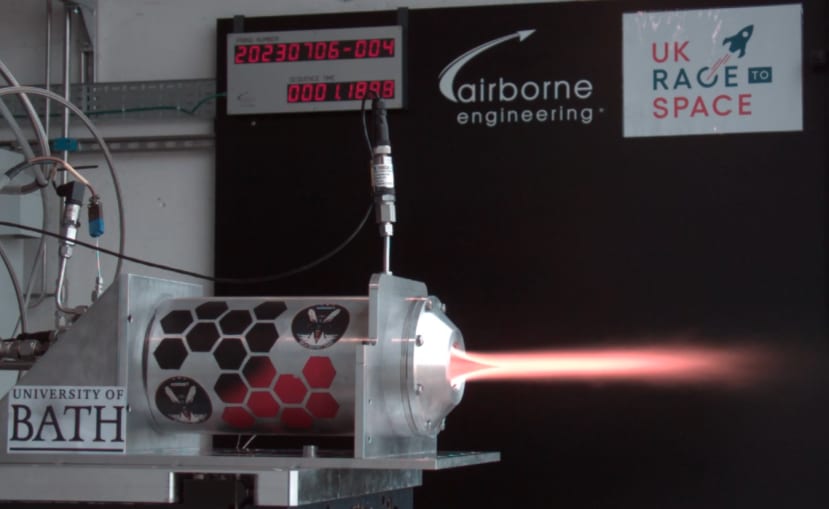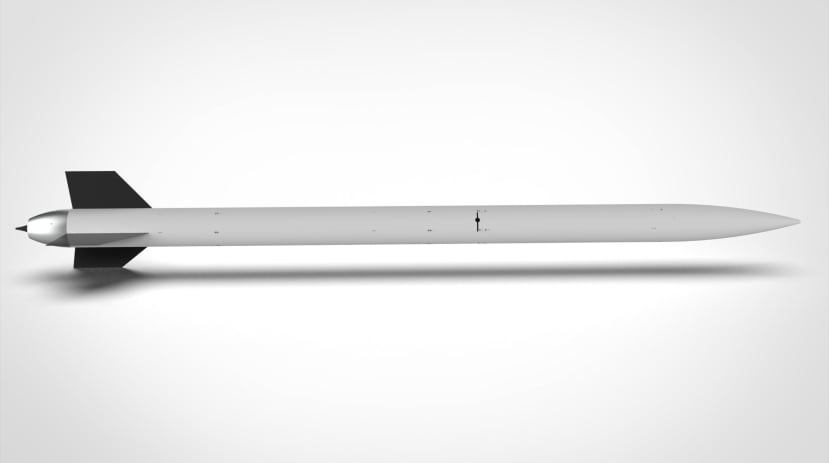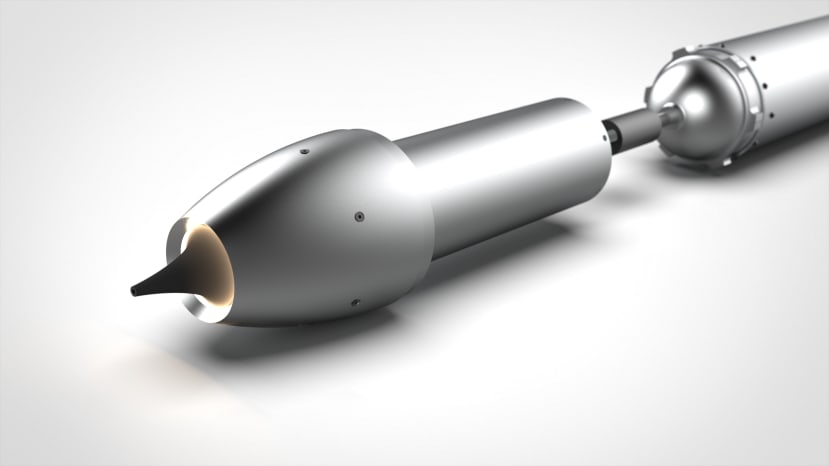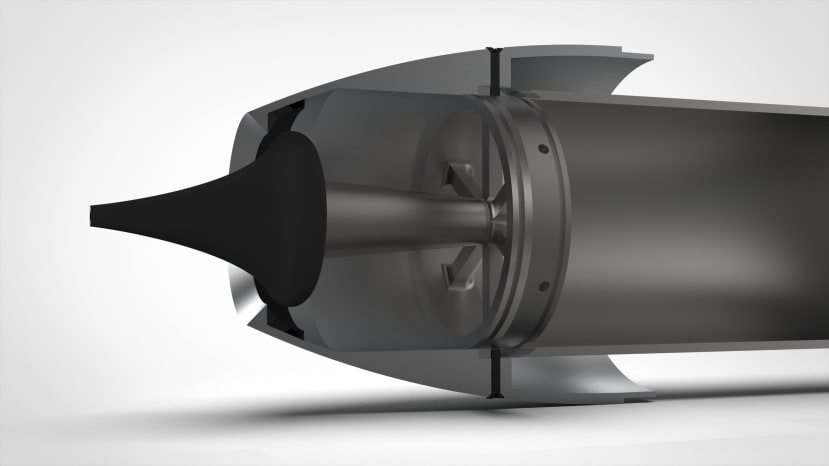Bath Rocket Team
关注文章你觉得这篇文章怎么样? 帮助我们为您提供更好的内容。
Thank you! Your feedback has been received.
There was a problem submitting your feedback, please try again later.
你觉得这篇文章怎么样?
Overview
We are the Bath Rocket Team, a student-led team at the University of Bath, and we are excited to have the support of RS and their RS Grassroots Student Project Fund. We are a high-power rocketry team currently designing a rocket which will fly to 9000m. We are hoping to compete at the European Rocketry Challenge in Portugal this October, using our new student-designed hybrid rocket engine.
Objectives
The team was started in 2017 and has competed at both the Spaceport America Cup and the European Rocketry Challenge, in the 3000m off-the-shelf motor category. This year we are excited to be entering the student-designed engine category with our own hybrid rocket engine, the result of 2 years of development. One of the key design challenges of this was the aerospike nozzle, a first for a UK student rocketry team. We successfully tested it at the UK Race to Space competition last summer, and are excited to launch it for the first time at EuRoC. The engine has come with a whole host of new challenges for the team to solve, such as going supersonic for the first time, designing high-pressure fuel systems, and manufacturing challenges caused by doubling the length and diameter of our rocket. We are hoping to use this engine (if successful) as a testbed for green fuels in the future, and we are currently researching how we can cast our own beeswax fuel grains to replace the paraffin wax in the engine.
Methodology
The rocket is currently in the late stages of the design process, with the final design tasks set to be completed in the coming months as part of various student projects. We are aiming to hold a final design review around Easter to catch any lingering issues with the design. At this point, the team's focus will move into manufacturing and assembly of the sub-systems. The engine should be complete for July for entry into UK Race to Space and the whole vehicle should be complete for October to compete in the European Rocketry Challenge. Work is currently ongoing in some of the key design areas, including avionics, payload, and recovery systems.
Avionics
The avionics is the brain of the rocket, running a microcontroller with student-developed software to control all flight stages. It contains a set of sensors for real-time flight measurements, which is used to study rocket performance, track flight status, and ensure the air brake and parachute systems are deployed on time. The avionics contains a telemetry system for long-range radio communication between the rocket and ground station to track the flight status in real-time. As the system is critical for the recovery and control of the rocket, it contains a robust power system and backup computer/sensors.
Payload
For our payload this year the team is running a design competition for first and second-year students at the university, as part of an effort to increase involvement across all year groups at the university. We will be rewarding the team (or two) with the best-designed and most interesting payload by flying it on our rocket at EuRoC.
Recovery
The recovery system is responsible for bringing the vehicle from apogee to the ground in a controlled way that allows the vehicle to be recovered intact. The descent follows a two-stage profile. The vehicle initially descends at a rate of 35m/s until it reaches an altitude of 450m. At this altitude, the primary chute is deployed, and the decent rate is lowered to below 9m/s. Our system relies on entirely electro-mechanical methods of deployment, lowering the likelihood of a deployment failure. The system will be tested extensively before flight to ensure it behaves as expected every time.
Airbrakes
The main goal of the European Rocketry Competition is to get as close to the target apogee as possible. This means that if the rocket is going to overshoot this apogee, the vehicle needs a way to slow itself down to hit the target. This is achieved with the airbrakes. The airbrakes extend plates into the airflow, increasing drag, and will be deployed at the correct moment in flight by the vehicle's avionics system.
Propulsion
For propulsion, we will be using our own hybrid rocket motor, which is a rocket motor that utilises both solid and liquid propellants. In our case, the fuel is made from solid paraffin, and the oxidiser is liquid nitrous oxide. These mix in the combustion chamber and are expelled out the nozzle to produce thrust. The nozzle the team is using is called an aerospike, a type of nozzle that is almost like taking a conventional nozzle and turning it inside out. It is particularly well suited for applications where there are large changes in atmospheric pressure, and a good throttle response is required. The spike itself is machined from graphite, helping it to withstand the high-temperature exhaust.
Products
We will be using the RS Grassroots Fund to buy a selection of electrical components we need for the rocket, including the stepper motors that will release the nosecone to make way for the parachutes, and parts of the avionics system that will control when that happens. These parts will allow us to begin physical testing of the various subsystems before we assemble the final rocket for full system testing this summer.
Next Steps
We are currently near to completing the design of the rocket and have started manufacturing and assembly of various subsystems such as the airbrakes and recovery system. The final elements of the design yet to be completed include a redesign of the oxidiser tank and some elements of the feed system. The team is currently practising with fibreglass layup techniques and will be manufacturing the main fuselage elements soon. Engine manufacture will also start soon, following the completion of a research project into post-combustion chamber insulation. Manufacturing work must be completed prior to UK Race to Space to allow time for cold-flow testing of the feed system. This will be followed by a series of tests of the avionics and control systems, pressure vessels, and the engine itself, which will no doubt expose issues and challenges that need to be solved.
If you would like to get in touch about the project email brt@bath.ac.uk, or you can find us on Instagram at instagram.com/bathrocketteam and LinkedIn at linkedin.com/company/bath-university-rocket-team. Keep an eye out on our channels for a full final CAD design reveal soon!




